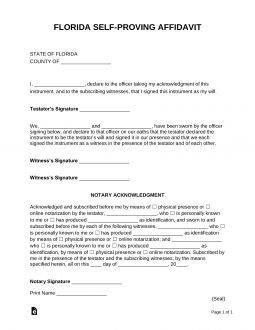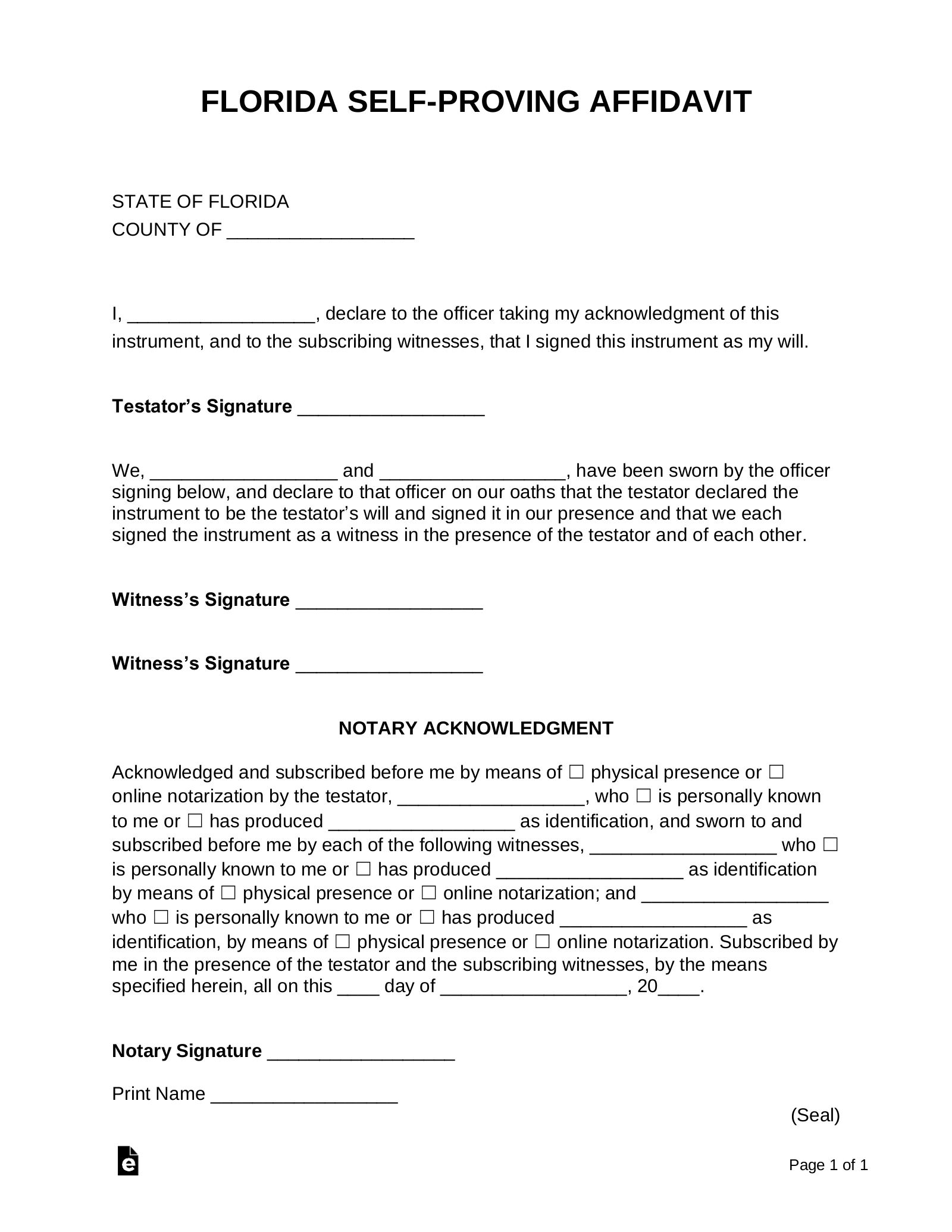Updated July 18, 2023
A Florida self-proving affidavit is a statement that verifies the authenticity of an individual’s last will and testament. The affidavit affirms that the testator (the individual who created the will) executed the will voluntarily and that they did so in the presence of two (2) witnesses. Both the testator and attesting witnesses must appear before a notary public and sign before the document can be deemed legally viable. When the testator dies, the affidavit will be presented to the probate court and used as evidence in support of the validity of the will.
Laws
- Statute – § 732.503
- Signing Requirements– Two (2) witnesses and a notary public.


